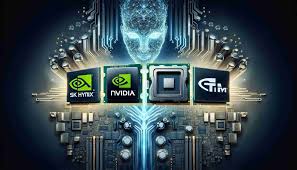
In a world where science fiction often becomes reality, Elon Musk stands at the forefront of innovation. His latest venture, Neuralink, promises to revolutionize the way we interact with technology and potentially redefine human capabilities. For tech enthusiasts eager to explore the future, Neuralink offers a fascinating glimpse into the intersection of neuroscience and advanced computing.
What is Neuralink? A Glimpse into the Future
Neuralink is a neurotechnology company founded by Elon Musk in 2016. Its primary goal is to develop implantable brain-machine interfaces (BMIs) that enable direct communication between the human brain and computers. This groundbreaking technology aims to merge the biological intelligence of humans with the artificial intelligence of machines, creating unprecedented possibilities for enhancing cognitive and physical abilities.
The significance of Neuralink cannot be overstated. It represents a pivotal step toward a future where humans can seamlessly integrate with digital devices, opening up a world of possibilities in healthcare, communication, and beyond. By bridging the gap between neurons and silicon chips, Neuralink aims to unlock new frontiers in both personal and collective human potential.
The Elon Musk Factor: Visionary Leadership
Elon Musk is no stranger to ambitious projects. From SpaceX to Tesla, his ventures have consistently pushed the boundaries of what is possible. With Neuralink, Musk envisions a future where humans can achieve symbiosis with AI, augmenting their natural abilities and overcoming the limitations of the human brain.
Musk’s involvement in Neuralink brings not only financial backing but also a relentless drive for innovation. His vision extends beyond mere technological advancement; he sees Neuralink as a solution to existential risks posed by superintelligent AI. By enabling humans to interface directly with machines, Musk hopes to ensure that we remain relevant and competitive in a rapidly evolving digital landscape.
How Neuralink Works: The Science Behind the Magic
At its core, Neuralink relies on ultra-thin, flexible electrodes that can be implanted into the brain with minimal damage to surrounding tissue. These electrodes, often referred to as “threads,” are capable of recording and stimulating brain activity with high precision. The data collected by these threads is then transmitted wirelessly to an external device, allowing for real-time interaction between the brain and computers.
One of the key applications of this technology is in treating neurological disorders. By precisely targeting specific brain regions, Neuralink has the potential to alleviate symptoms of conditions such as Parkinson’s disease, epilepsy, and even depression. Additionally, the ability to directly interface with the brain opens up exciting possibilities for enhancing cognitive functions, such as memory and learning capabilities.
The Impact on Healthcare and Technology
Neuralink’s potential impact on healthcare is profound. By offering new treatment options for a wide range of neurological conditions, it could significantly improve the quality of life for millions of people worldwide. Furthermore, the ability to restore lost functions, such as sight or mobility, holds immense promise for individuals with disabilities.
Beyond healthcare, Neuralink’s technology could revolutionize other sectors as well. For instance, in the realm of communication, it could enable telepathic-like interactions, allowing people to convey thoughts and emotions directly without the need for spoken or written language. In the field of cybersecurity, brain-machine interfaces could provide an additional layer of security by using brainwave patterns as unique identifiers.
Ethical and Privacy Concerns: Navigating Uncharted Waters
While the potential benefits of Neuralink are immense, they come with a host of ethical and privacy concerns. One of the primary issues is the potential for misuse of the technology. The ability to access and manipulate brain activity raises questions about consent, autonomy, and the potential for abuse by malicious actors.
Privacy is another significant concern. With the capability to record and transmit brain activity, there is a risk that sensitive personal information could be exposed or exploited. Ensuring robust safeguards and regulatory frameworks will be crucial in addressing these concerns and building public trust in the technology.
The Future Outlook: A World of Possibilities
Looking ahead, the future of Neuralink appears both promising and challenging. The company’s ambitious goals will require significant advancements in both neuroscience and engineering. However, if successful, Neuralink could pave the way for a new era of human-machine interaction, transforming various aspects of our lives in ways we can only begin to imagine.
For tech enthusiasts, Neuralink represents a bold step into the unknown, offering a glimpse of what the future may hold. As we continue to explore and develop this groundbreaking technology, it is essential to remain mindful of the ethical and societal implications, ensuring that the benefits are realized while minimizing potential risks.
In conclusion, Neuralink offers an exciting vision of the future, where humans and machines work together in harmony. By leveraging the power of brain-machine interfaces, we can unlock new potentials in healthcare, communication, and beyond. For those eager to be part of this revolution, staying informed and engaged with the developments at Neuralink is a must.



